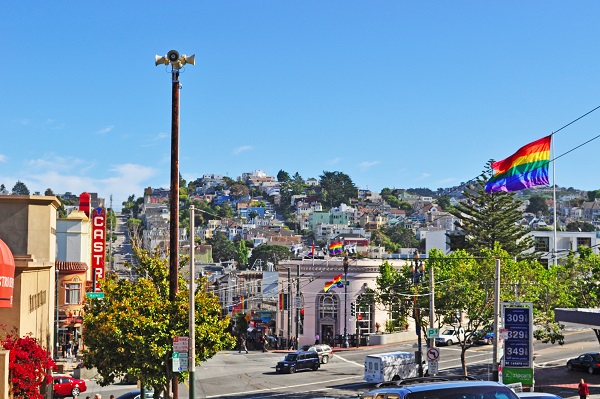Prices and rents are rising as many longtime residents of neighborhoods like The Castro in San Francisco, The Village in New York, and Boystown in Chicago are aging up, moving out and taking their businesses with them. Time-tested old gayborhood haunts can still be found in each and are fun for a weekend but, for most homeowners, they are hardly sustainable places to live.
The disappearance and gentrification of the gayborhood does not mean that you cannot find your own LGBTQ community to call your new home, it only means that you may need to look outside the places most people initially think of.
LGBTQ people have always existed and lived in places all over the globe. You only need to look at Queering the Map for a heartwarming archive of LGBTQ experiences worldwide.
The oldest gayborhoods in the United States were formed as safe havens from the homophobia, misogyny, and racism, of straight culture in the surrounding cities. In fact, the Greenwhich Village Society for Historical Preservation writes that what eventually became part of New York’s Gay Village between Spring St. and West 3rd was, in the 19th century referred to as “Little Africa,” and was populated around the farmland of “partially-freed slaves.” Throughout the 20th century the area was also populated by transgender sex-workers and then later by many others from New Work’s disaffected queer community.
Marginalized and underpaid, the neighborhoods they created tended to be low-income and offered places where diverse people and communities could gather with moderate safety. In the last few decades, astronomical price increases in many of the gayborhoods and increased acceptance of LGBTQ people has meant that some were forced out, and some left with a fat wallet able to move to new builds and new places.
Access to technology has likewise mitigated the necessity for self-contained neighborhoods. Thanks to apps like Facebook, Grindr, Tinder and Skipthegames almost any place can host an impromptu gaythering which means there is more flexibility in where to live than ever before, as now a days there are many casual sex hookup apps and sites where you can find a partner and more.
Still many LGBTQ people choose to search out housing with their intersecting communities. Gayborhoods continue to form in new places all across the United States: east-coast, west-coast, and no-coast.
Many lesbians opt for more rural places. The outskirts of Iowa City, for example, a liberal bubble and home to the University of Iowa, has a thriving lesbian community. In places like this Heather Dockray, writes “Lesbians may feel more accepted in rural areas, where female masculinity isn’t as tightly policed as male femininity; lesbians have less capital than gay men (women, including queer women, continue to make less than men) and therefore may not be able to afford urban neighborhoods; lesbians are statistically more likely to have children (and therefore different housing requirements).”
The Marmalade in Salt Lake City, Utah is now the site of affordable living and a sizable amount LGBTQ owned and operated businesses and clubs. It is located just blocks away from the state Capitol building and offers easy access to the best of the city and to scenic rolling foothills beyond.
In Chicago, Andersonville and the neighboring Edgewater, on the north-side just off the coast of Lake Michigan, have become alternatives to the rapidly developing Boystown. Andersonville, an originally Swedish enclave, maintains that culture with a wide variety of bakeries and restaurants, the Swedish American Museum, and is home to the relocated Women and Children First feminist bookstore. Edgewater has become a popular location for the city’s lesbian women.
Bywater, New Orleans, is also a neighborhood with a vibrant history rooted in the struggles and successes of people of color. Located in the city’s 9th Ward, Bywater is a quieter and more affordable alternative to the French Quarter, but still allows access to colorful artwork, mosaics, music and, of course, bottomless mimosas.
What can you do to find the gayborhood of your dreams?
First, determine what it is you are looking for. Do you want to be in a place with a queer history you can see, where plagues adorn the buildings and benches? Are you looking for affordability without compromising commonality with your neighbors? Are you looking for nightlife? Would you like to be somewhere urban or rural?
Seek out the local LGBTQ community in many cities. There is no better way to get your bearings in a new place than by finding your local center. Even if you do not end up moving into the block adjacent, the people you will meet there can introduce you to new resources, assistance, and events. Everybody wants neighbors they like and the community center may be the best place to find your new neighbors.
Finally, connect with an LGBTQ Realtor at www.GayRealEstate.com – Start a conversation with agents that have been serving our community for over 25 years! Nobody is more familiar with the culture and affordability of queer neighborhoods than queer people. The most important rule to finding yourself a new gayborhood to call your own, is to learn about the individual history of the space and your neighbors.



